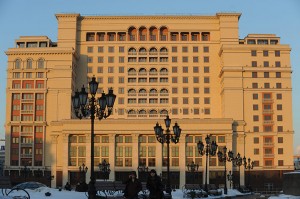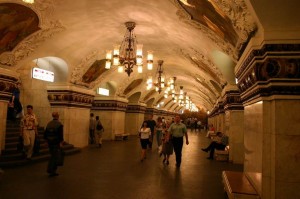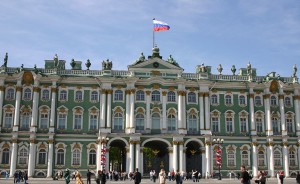With the Sochi Olympics underway, Meet the Russians hitting our screens, Londongrad on shelves, and borscht becoming a staple in trendy restaurants, Russia is making its cultural mark on London. In -10 degrees and a coat not at all thick enough, I found myself in Moscow, eager to see whether our capital had rubbed off on theirs in turn.
This colossal country straddles continents and its politics have been at the centre of worldwide controversy for centuries.
Nevertheless, having visited St Petersburg, I anticipated that Moscow would be as Westernised as other cities on the edge of Europe. I was surprised then to find that it revealed itself indifferent and even hostile to Western culture, even on first impression. So I found that although in both cities most people live in apartments, the large, monotonous Soviet blocks I saw around me in Moscow were a far cry from the cool, classical, shimmering palaces of St Petersburg.
Determined to see Moscow through the medium of its art, I was taken on the Metro to the Tretyakov Gallery. Everyone talks about the Metro – it is the pride of the city. Chandeliers hang from the painted ceilings and marble lines the walls. These walls are in turn edged with metal friezes of cannon and scythes and as I walked through the impressive underground halls I found myself thinking that modernity in Moscow was overshadowed by brutality. Remembering again the European glitz of St Petersburg, Muscovite beauty is a different breed.
When we reached the gallery I couldn’t help feeling the same slight unease. The rooms here are neither well cared for, nor made beautiful for the sake of the art on the walls. The Tretyakov houses a significant collection of Orthodox icons, whose medieval aura pervades many of the churches around the city. However, it was through the secular paintings of the early twentieth century that I began to see a European Russia.Western motifs pervaded the paintings on every wall, and once again I found myself comparing Moscow to St Petersburg, built in many ways as a celebration of the European aesthetic.
Between the two cities the nature of being Russian and the shadow that political turmoil casts upon each is distinct. The pastel surface in St Petersburg cannot cover what Moscow’s architecture reveals: its mathematical brutality would create a cold impression even if one were wrapped in mink.

The Moskva Hotel - asymmetrical due to Stalin signing off on the build without noticing the different design options on each side of the plan
I found it hard to understand my host’s explanation of Russian hostility towards LBGTQ+ rights: “Western” values are not Russian values. According to him it is a case of integrity, not a lack of progressiveness. One only has to watch Alan Bennett’s An Englishman Abroad to understand how proudly, icily separate Russia is from Western Europe, and, indeed, from the sugary shine of St Petersburg. There is a depth to Moscow underneath the gilt glamour of oligarchy that will take more than a long weekend to uncover.
Photographs thanks to: http://www.museum.ru/m106 http://reiflarsen.tumblr.com/post/11431499982/the-ersatz-city-while-trying-to-remain-hopeful http://www.ecuad.ca/~vsager/FNDT%20150%20Spring%2012/icons.htmlhttp://www.railnews.co.in/the-moscow-metro-system-is-just-incredible/



